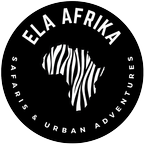Radio Enosi 97.3 FM, December 10th, 2019Ράδιο Ένωση 97,3 FM, 10 Δεκεμβρίου 2019
This is the broadcast “Music Moto Travelling” with Michael Papadakos, which was dedicated to my adventures around Asia and Africa. It was live on December 10th, 2019, 19:00 – 20:00 on Radio Enosi 97.3 FM. It is in Greek.
Εδώ μπορείτε ν’ ακούσετε την εκπομπή “Music Moto Travelling” του Μιχάλη Παπαδάκου, που ήταν αφιερωμένη στα ταξίδια μου στην Ασία και την Αφρική. Μεταδόθηκε ζωντανά στις 10 Δεκεμβρίου 2019, 19:00 – 20:00 από το Ράδιο Ένωση 97,3 FM.















